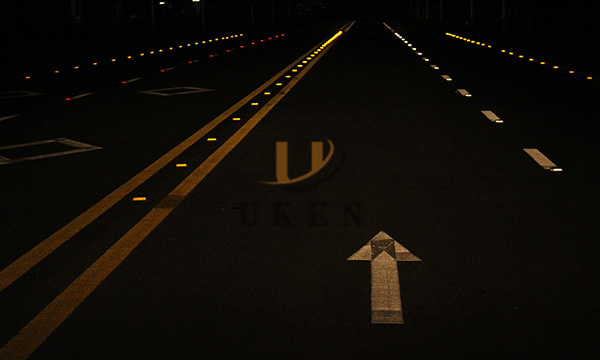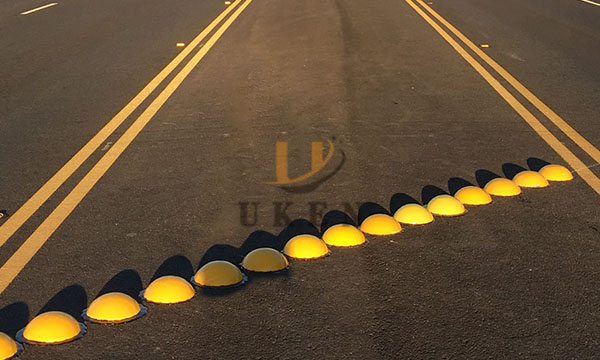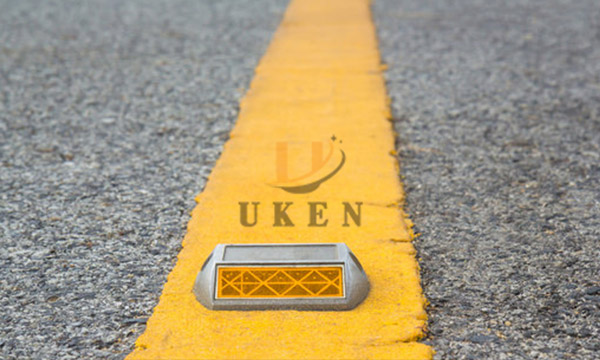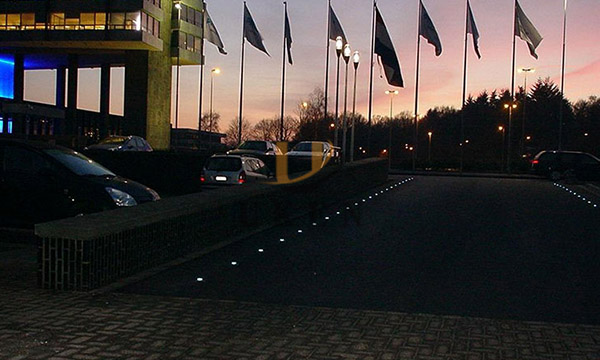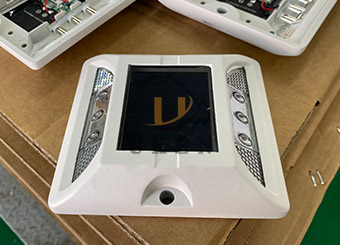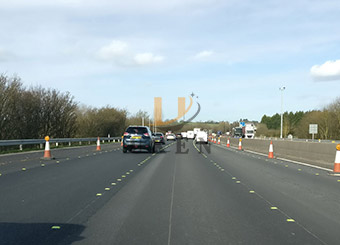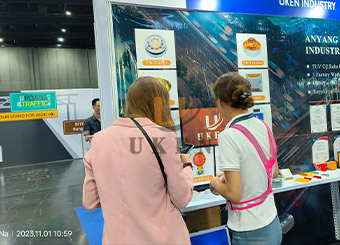Reflective road studs are an important traffic safety facility, mainly used in highway traffic. They are installed in the middle of the road markings or the middle of the double yellow line, and their retro-reflective properties remind drivers to drive in the correct lane. Reflective pavement studs are mainly composed of shells, reflectors, bases, sealing materials, etc. Each component of the reflective road stud is made of different materials.
When choosing a reflective road stud, you can choose a reflective road stud of suitable materials based on your actual needs. In the following article, the reflective road stud manufacturer will discuss with you what materials are used to produce reflective road studs.
Shell material of reflective road stud
The commonly used materials for the shells of reflective pavement studs are cast aluminum, stainless steel, engineering plastics, and ceramics. The shells of different materials have different properties. The selection of different shell materials needs to be determined according to actual use needs and the project budget.
Cast aluminum alloy
Cast aluminum alloy is a high-strength, corrosion-resistant material with outstanding compressive resistance. It is more suitable for roads with large traffic flow and heavy vehicles passing through.
Cast aluminum reflective pavement studs also have good weather resistance and are suitable for various weather conditions.
Stainless steel
The biggest advantage of stainless steel is corrosion resistance, which is very suitable for relatively humid or highly corrosive environments such as coastal areas. Reflective road markers with stainless steel shells also have very good pressure resistance and are suitable for use on roads with relatively harsh environments.
Engineering plastics
The advantages of engineering plastics are lightweight, low cost, and good durability. They are more suitable for light traffic areas, such as urban street intersections, bicycle lanes, etc. Reflective road studs made of engineering plastics usually have good impact resistance and UV resistance, which can effectively prevent aging and fading after long-term use.
Ceramic materials
Ceramic materials usually have higher pressure resistance and wear resistance and can maintain long-term stability and reliability in harsh traffic environments. Ceramic reflective road studs are also highly corrosion-resistant and can be used normally even in highly corrosive environments such as acid rain or salt spray.
Reflector material of reflective road stud
The reflector of the reflective road markers generally has high-strength reflective material or glass beads. Regardless of the material used, the reflector of the reflective road stud is designed to reflect the light from the headlights into the driver’s field of vision to ensure driving safety.
High-strength reflective materials such as PMMA, commonly known as acrylic, are highly transparent, impact-resistant, and weather-resistant. They have a long-lasting reflective effect and are not easy to fade. They are excellent reflective materials.
Glass beads are often embedded in the surface of the reflector to enhance the reflective effect.
Reflective road markers embedded with glass beads have good marking properties under severe weather conditions. Glass beads can effectively reflect light back under the illumination of car lights and have good visibility.
Base material of reflective road stud
The base material of the road stud reflectors can be the same as the shell material or different. If the reflective road stud is used in a high-load and harsh environment, the shell and base can be made of cast aluminum or stainless steel at the same time to enhance durability and corrosion resistance. Similarly, if the reflective road stud is used in light traffic conditions, engineering plastics can be used as the base and shell materials at the same time, which can save costs while ensuring the effect.
If the reflective road stud is mainly used for light load traffic or decoration, the shell and base can also be customized into different materials from the perspective of use effect and cost saving.
Sealing material material of reflective road stud
The sealing material of the reflective road stud plays a very critical role in its waterproof and dustproof performance. Commonly used reflective materials in
road stud reflectors include epoxy resin, rubber sealing rings, etc.
Epoxy resin has very good adhesion and sealing properties. It is often used to fill and seal the inside of reflective road studs to prevent moisture, dust, and impurities from entering the inside of the road studs, especially in electronic components and luminous road studs.
Rubber sealing rings are generally used at the joints between the shell and the base of reflective road studs. They can effectively seal and play a shock-absorbing role and are suitable for high-pressure road environments.
Reflective road studs made of different materials have different performances and effects. When choosing reflective road studs, you should consider the road environment, weather conditions, traffic flow, and many other factors where you want to install the road stud reflectors. In addition, you also need to combine your budget. It is our pursuit to develop the most suitable solution for you within your acceptable range. If you have any questions about reflective road studs made of different materials, please contact us!
